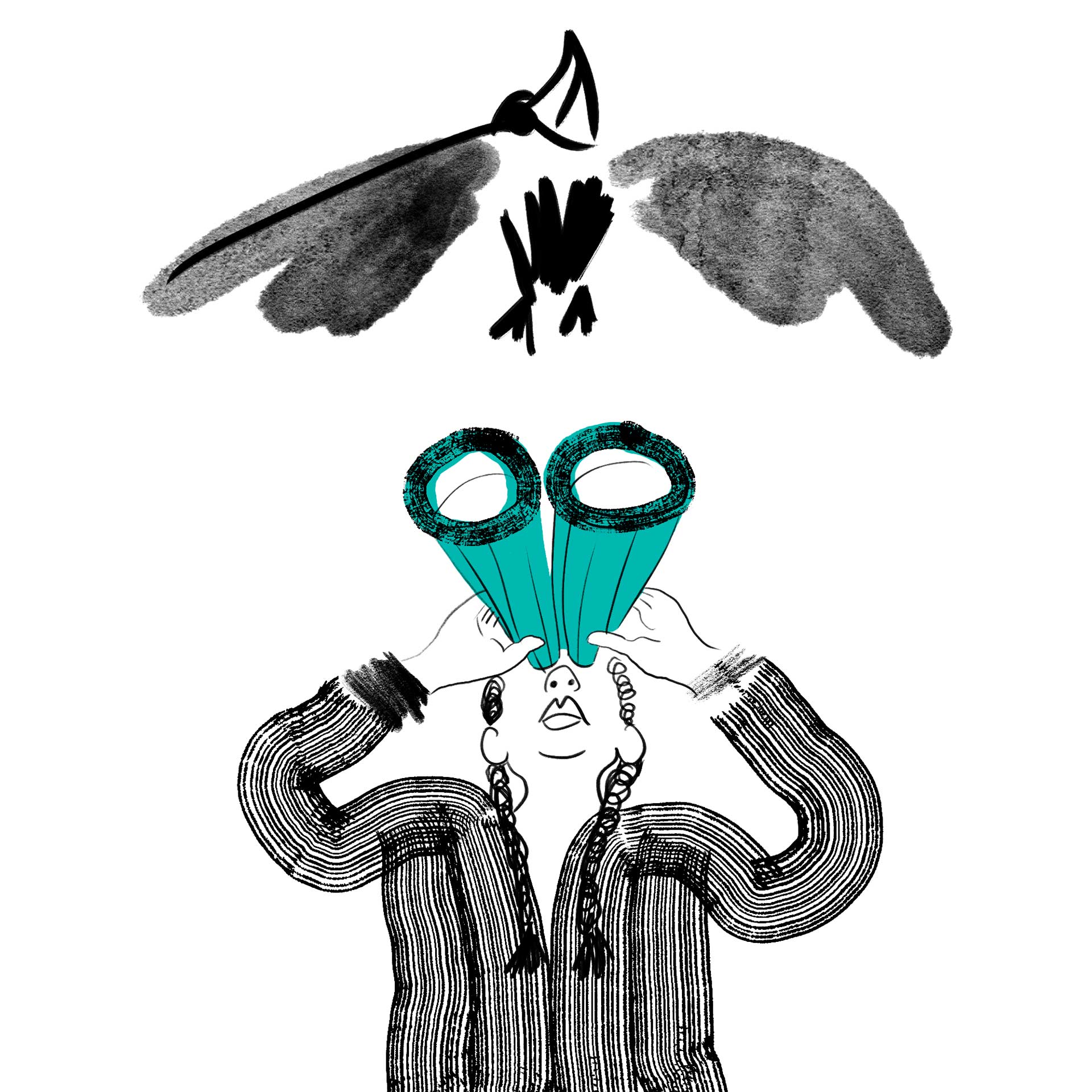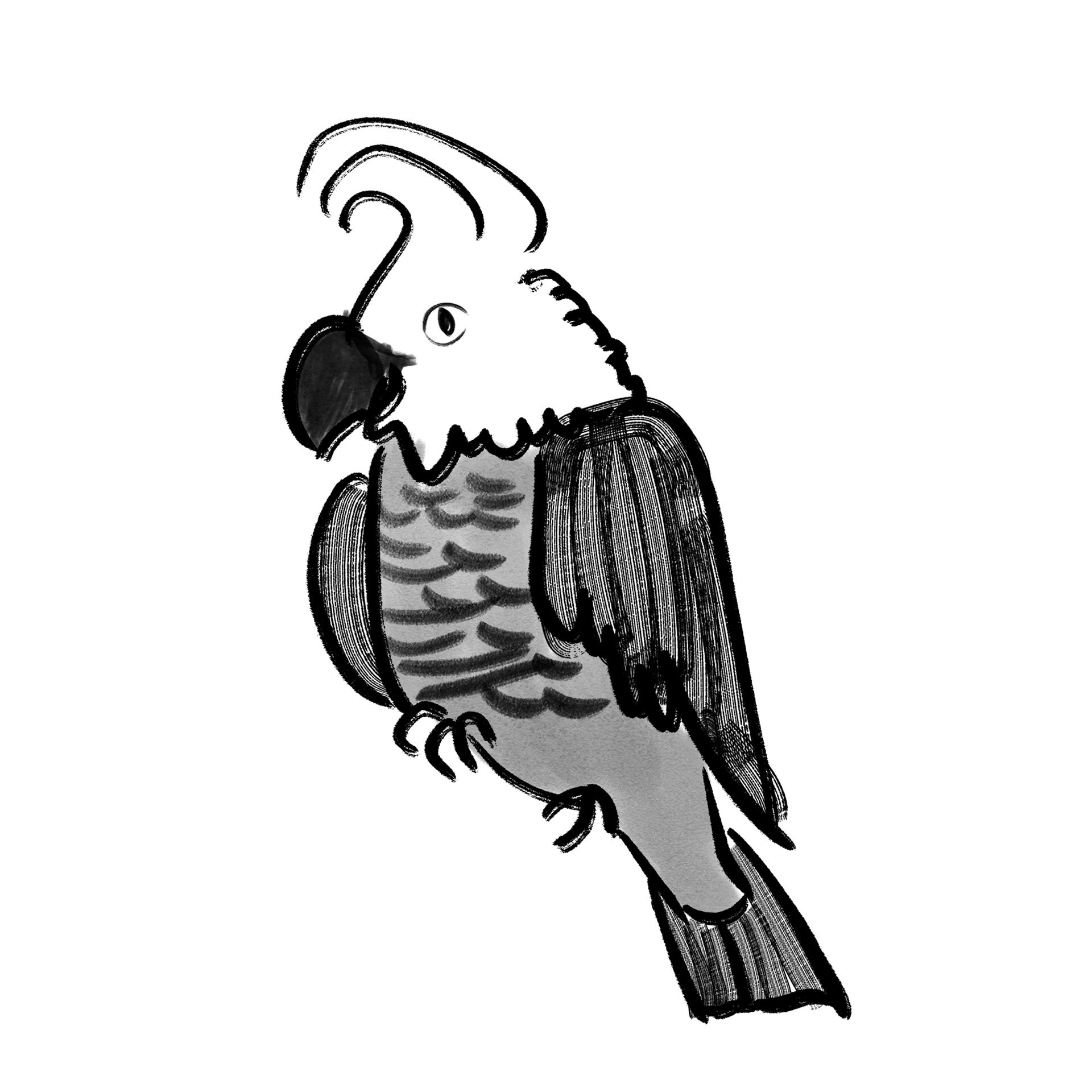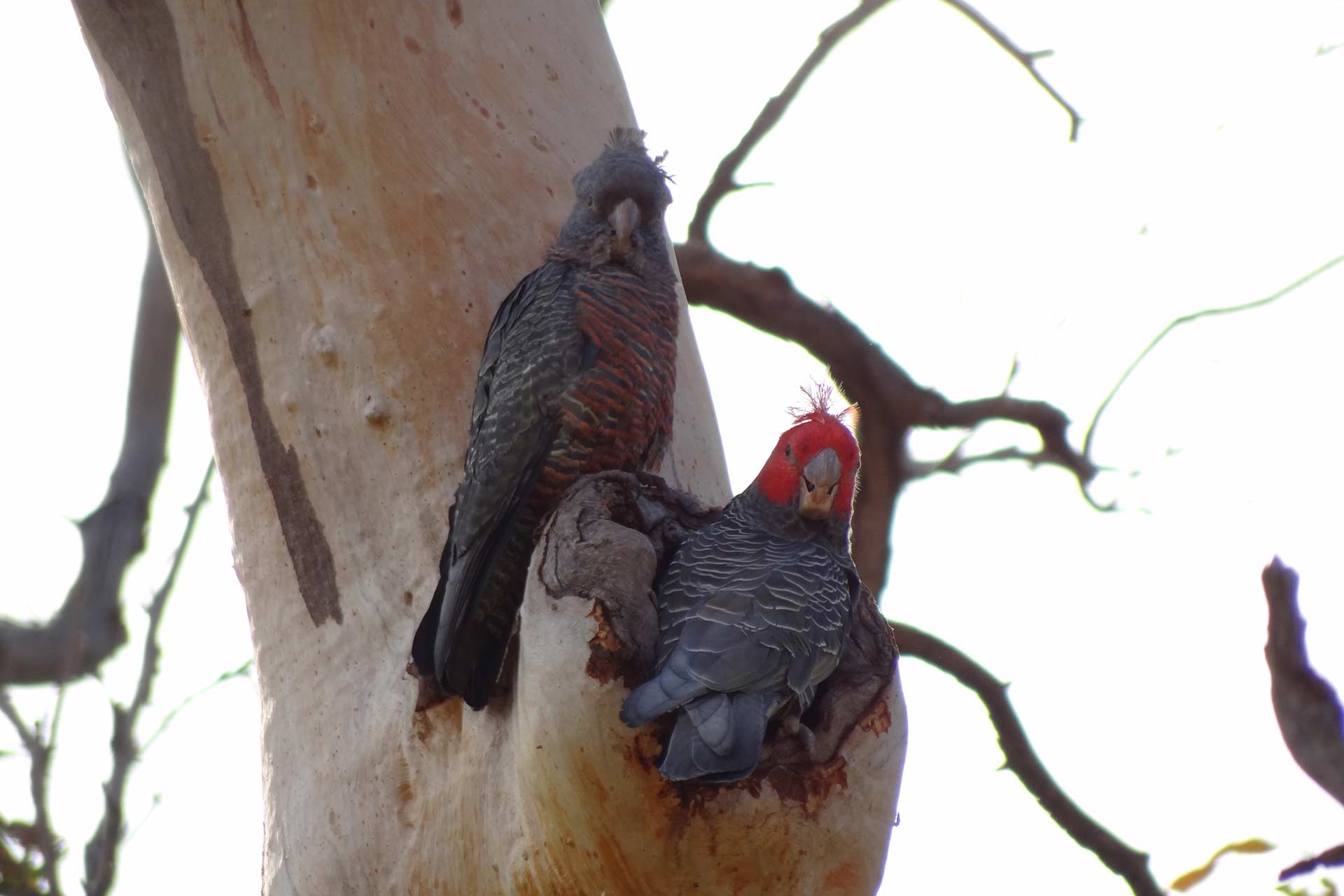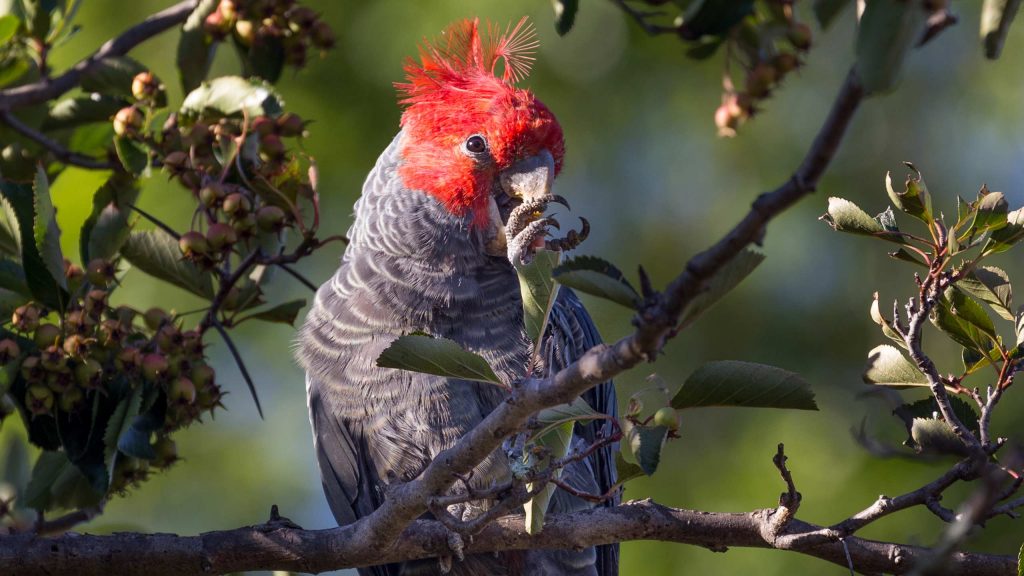Glorious Gang-gangs!
Canberra Nature Map volunteers are changing what we know about these charismatic cockatoos.
Volunteering type: Citizen science
Banner image: By Steve Bittinger
Have you ever seen a Gang-gang Cockatoo around Canberra? Or you might have heard their call which is often likened to a ‘creaky door’.
They’re the faunal emblem of Canberra, but scientifically speaking, we don’t know much about them. The Gang-gang project, conducted through Canberra Nature Map (CNM) and with help from Canberra Ornithologists Group (COG), is changing that.
Almost 60 volunteer citizen scientists have contributed to the Gang-gang project, which aims to learn more about these beautiful birds.

Michael Mulvaney (CNM) and Chris Davey (COG) started the study into the breeding behaviour of Gang-gang Cockatoos over the summer of 2019-20 to build on data they had gathered over previous seasons.
The Gang-gang survey was conducted through Canberra Nature Map, and citizen scientist families and individuals put their hands up to help with the survey. These volunteers monitored and photographed Gang-gangs at potential nesting sites. Between them, they spotted Gang-gangs 870 times at 149 different trees in the two-month period.
Out of these 149 trees, just 15 were identified as nesting sites. Volunteers observed the nesting habits of the Gang-gangs throughout incubation and chick-rearing to find out as much as they could about breeding behaviour. At the end of the study, 21 chicks had survived to fledge and left their nests. Volunteers saw chicks fall out of nests, observed interesting parental interactions, and even neighbourly behaviour amongst pairs nesting near to one another.
A year on, 35 nesting trees have been identified but only 12-16 are used for breeding in any given year. Measurements from the known nest hollows have been used to inform the design of a Gang-gang nest tube which is currently being trialled by the Act Government and Eurobodalla Shire.
The ACT survey methodology and information is being applied elsewhere in Australia. Similar nest hollow surveys are underway, with assistance from the ACT team, on the South Coast and Campbelltown City Council, and another is about to commence in the Blue Mountains. It is hoped that it will soon be possible to compare the ACT survey results with those of other regions.

There has been a nearly 70% decline in Gang-gang numbers across Australia over the past few decades, with the Threatened Species Committee recommending they are now classified as endangered. The more we know about what Gang-gangs need to breed successfully, the better equipped we are to provide suitable habitat and try to help mitigate the effects of climate change. Information from this study could form an important part of future conservation plans for the species. Much of what was observed had never been recorded before, and the project has added significantly to our overall knowledge about these characterful cockatoos.
Interesting bits and pieces
Neighbourly gangs
The nesting sites observed tended to be close to each other. Several volunteers reported peaceful and helpful relationships between Gang-gang pairs at neighbouring sites. Gang-gang pairs were observed to chase off different bird species from unattended hollows, and pairs were even observed calling to each other, flying off together and visiting each other’s hollows.

Gang-gangs prefer to nest in the serenity of the bush, but like to be close to the conveniences of urban centres
No chicks were found in urban gardens, small urban parks or road reserves. However, all of the sites were close to the urban edge, indicating the parents might like to be close to urban areas for increased access to water and food. The researchers suggest that future studies should look at Gang-gang nesting habits further out from the urban fringe, to see if there are observable differences.

It’s hard to figure out where the nesting sites are
Gang-gangs spend most of the year checking out tree hollows as potential nesting sites. They are very fussy about where they nest, so it’s hard to tell whether they are actually nesting in a hollow or just visiting. To complicate things further, some hollows trap water inside them and are visited by many Gang-gangs for water during dry periods.

Mum and dad share duties equally
During incubation, the female takes night duty, and the male takes day duty, swapping shifts at nightfall and early in the morning. As the chicks hatch and begin to grow, the shifts grow shorter, and after some weeks, the parents were seen to even leave the nest together for short periods.


